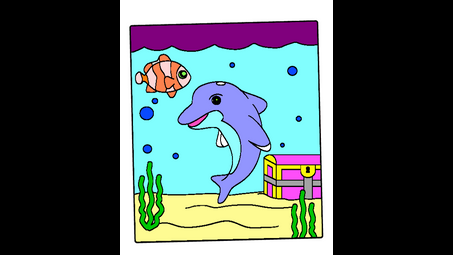Utah has a climate typical of other arid, relatively high altitude locales (most of the state has an elevation nearly one mile high). Most of the state is desert due to the inland location and the rain shadow effect of the Sierra Nevada mountains, with some relatively lush regions at higher elevations (mountains) where more rain falls due to local updrafts extracting residual moisture from the air.
Temperatures are quite high in the desert regions during summers, but are moderated somewhat by the elevation. In the winter, deserts of this kind can also be quite cold due to the lack of cloud cover and low humidity, as well as the high elevation. The mountains of course are colder still, and can have some snow in spots for most of the year.
In Salt Lake City at an elevation of 4,222 feet, the average high in July is about 92 degrees, and the record is 107 degrees. In January, the average low is just under 20 degrees, and the record low (in Feb.) was -30 degrees. The high annual variation (72 degrees) is typical of dry upland climates, and is true throughout the state. The diurnal variation (daytime high to nighttime low) is also high as is typical of desert climates, being over 30 degrees in Summer.
Precipitation in Salt Lake City averages 15 inches a year, mostly in Winter, when it often falls as snow, averaging about 60 inches a year, with much more in the mountains.
Much of the rest of the state has more extreme conditions than Salt Lake City which is moderated somewhat by the nearby Great Salt Lake to the West, and Wasatch Mountains to the East.
For example, while Zion N.P., in the Southwest corner of the state, is similar to Salt Lake City, with average highs of 99 degrees and lows of 29 degrees and about 15 inches of rain (much of it in the form of thunderstorms), St. George, Utah, at only 2,936 feet elevation, has an average high of 116 degrees in June and an average low of 24 degrees in Jan., with only 8 inches of rain, while Bryce Canyon N.P. at an elevation of 7,589 feet, has an average high of 92 degrees in Summer and an average low of 4 degrees in Jan. due to the higher elevation, with only 9 inches of rain.
Most of the state has a large number of sunny days each year due primarily to the low humidity. Wind can be expected to be steady in the large flat expanses of much of the state.
(Data from "The USA Today Weather Almanac" for 1995)
Hot and dry some snow in the high desert areas.
Northern Utah which is Provo, Utah and up experiences winters with average temperatures in the thirties between November and March. In may temperatures rise to 60's and low 70's. Between June and August consistent 90 degree weather is not unusual but the temperature is ussually around 80.
Utah is arid and semi-arid
Wiki User
∙ 7y agoWiki User
∙ 11y agosoutheast
KayLynn Angus
hay

KayLynn Angus
hi
Anonymous
Tiug Gjg
Anonymous
bich
Add your answer:
What climate zone is the prairie located?
temperate
In what climate zone is Miami located?
its warm
What is the climate of Manaus?
the zone in which brazil is located would be the tropical zone
What is wapusk national parks climate zone?
Wapusk is located in northern Manitoba and is located in the wiener ecozone.
In which climate zone are most of Mexico's farms and people located?
Temperate or "Tierra Templada".
What climate zone are deserts located in?
Deserts are located in temperate, tropical, and even polar regions. They are not confined to a particular climate zone.
Where were the Subarctic indians located?
In the Subarctic climate zone located below the Arctic zone.
In what climate zone is Miami located?
its warm
What climate zone is the prairie located?
temperate
Where is the temperate climate zone?
The climate zone known as temperate is located between the equator and the North and South poles.
What is the climate of Manaus?
the zone in which brazil is located would be the tropical zone
Where is the cold temperate climate zone?
The climate zone known as temperate is located between the equator and the North and South poles.
What climate zone is Raleigh NC located?
Raleigh is zone 7b (close to 8a).
Which states are in the climate zone?
texas, New Mexico, Arizona, California,nevada, utah good luck!
Which climate area is Arabian gulf located?
Tempated Zone
Where is a trocipal climate zone most likely located?
in the tropics
Which climate zone is Japan located?
The climate zone in Japan are cold climates and temperate climates. And there are no dry season, always lots of rain!!!!!!Temperate monsoon
